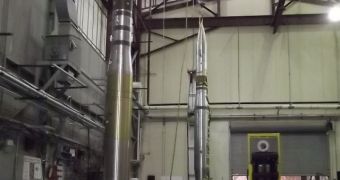NASA is currently preparing for the launch of its High Resolution Coronal Imager (HI-C) solar telescope, which is scheduled to take place on July 11. This is not a spacecraft, but rather an instrument that will spend only a few minutes out of Earth's atmosphere.
Hi-C will be carried to space aboard a Black Brant sounding rocket, which will be launched from the New Mexico-based White Sands Missile Range. The delivery system will fly for about 620 seconds.
During this interval, it will climb sufficiently to exit the planet's atmosphere, and prevent it from blocking the extreme ultraviolet radiations released by the Sun. These wavelengths are HI-C's main science target, experts say.
According to the instrument's specifications chart, it is the highest-resolution solar telescope ever developed for studying the solar corona. This is the outer layer of the Sun's atmosphere, which is heated to temperatures of millions of degrees.
HI-C was created so that it could enable solar physicists to observe fundamental structures on the Sun. Experts believe that the instrument will be able to “see” details as small as 100 miles (160 km) across.
“Other instruments in space can't resolve things that small, but they do suggest – after detailed computer analysis of the amount of light in any given pixel – that structures in the Sun's atmosphere are about 100 miles across,” expert Jonathan Cirtain says.
“And we also have theories about the shapes of structures in the atmosphere, or corona, that expect that size. HI-C will be the first chance we have to see them,” adds the expert, a HI-C project scientist and a solar scientist at the NASA Marshall Space Flight Center (MSFC), in Huntsville, Alabama.
Compared to the Atmospheric Imaging Assembly (AIA) instrument on the NASA Solar Dynamics Observatory (SDO), the HI-C telescope has a spatial resolution around 5 times higher. The smallest structures AIA can observe are 600 miles (965 kilometers) across.
However, AIA is the more powerful instrument. It can see the entire surface of the Sun at this resolution, and conducts observations in 10 wavelengths at the same time. HI-C will only observe one sixth of the width of the Sun, at a single wavelength (193 Angstroms).
“We will start acquiring data at 69 seconds after launch, at a rate of roughly an image a second. We will be able to look through a secondary H-alpha telescope on the instrument in real time and re-point the main telescope as needed,” Cirtain explains.

 14 DAY TRIAL //
14 DAY TRIAL //